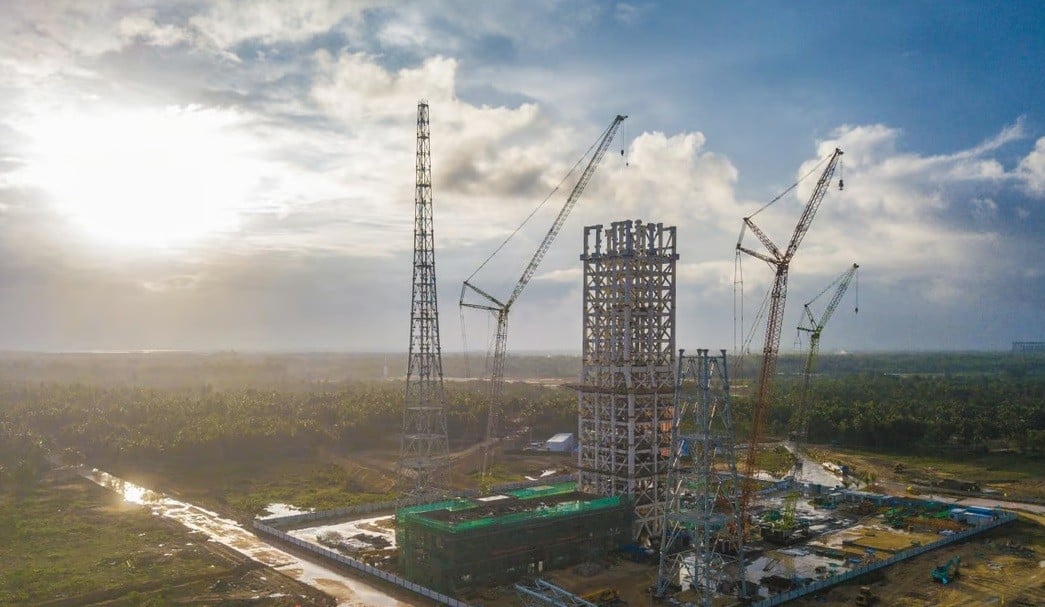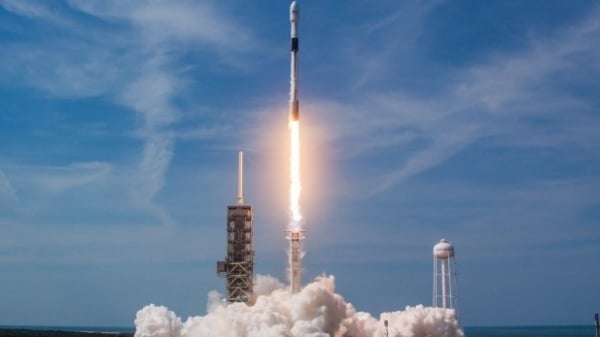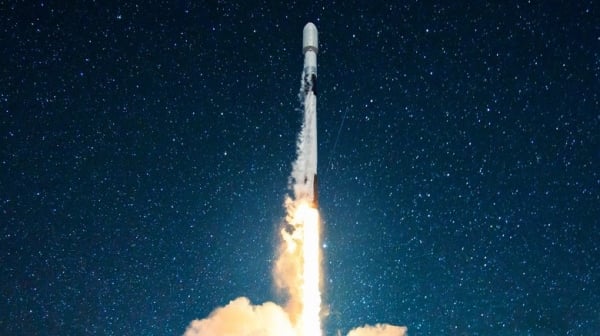 |
| The new launch pad is being built in Wenchang, Hainan, at a rate of one stage every 10 days. (Source: Xinhua) |
When completed next year, the “super rocket factory” on the tropical island of Hainan will nearly double China’s annual production capacity. It is also currently the largest rocket-producing facility in the world.
China plans to use the medium-sized launch vehicle to send more than 1,000 satellites into space each year, matching the current pace of billionaire Elon Musk’s SpaceX. The new rocket is also designed to put satellites into a higher orbit than SpaceX’s Starlink satellites. The higher altitude would allow Chinese satellites to monitor or even overwhelm US rivals.
Song Zhengyu, a senior rocket scientist from the China Academy of Launch Vehicle Technology (CALT) who is leading the Long March 8 team, said the race to “build a giant satellite constellation is pushing China’s space industry into a new era,” according to an article published in the China Astronautical Journal in April 2023.
Towards modern production lines
In an effort to catch up with SpaceX's Starlink service, China plans to launch nearly 13,000 satellites into orbit, in addition to the 4,000 it has already launched. Beijing also aims to disrupt Starlink's global services through a project codenamed "GW."
However, Chinese scientists say that Beijing's current missile lineup is still not up to the task. Most of the Long March rockets are either too small or too large. Furthermore, China's current rocket production methods cannot achieve the speed required by the "GW" project.
In traditional missile manufacturing, workers assemble different parts and attach them to the missile at a fixed location. The missile itself does not move in a straight line, but stays in one place while workers move around to complete the assembly work. Now, some modern missile manufacturers have begun to use pulse assembly line techniques — similar to those used to build fighter jets — to speed up assembly and reduce costs.
SpaceX has developed an automated system called the “Falcon 9 Integrated Assembly Line,” which uses synchronized pulses to move rocket parts during assembly quickly and efficiently. This method allows SpaceX to produce more rockets at a lower cost than traditional methods.
According to the team of scientists, the Long March 8 manufacturing plant in Wenchang, Hainan, China will have an assembly method similar to SpaceX's but still have some unique advantages.
For a pulse assembly line to operate efficiently, it is important to have a steady supply of high-quality components to quickly complete the final product. In China, such a task can be relatively easy and cost-competitive, as the “factory of the world” has a large production capacity for a wide range of industrial products, including those requiring high precision.
Reduce costs
According to a recent report by researchers at China Aerospace, launching the current Long March rocket into low Earth orbit (LEO) costs about $3,300 per kilogram, similar to the Falcon 9 rocket. Therefore, scientists from Song Zhengyu's team are looking for ways to reduce the cost of the Long March 8.
Method testing is a meticulous process that involves measuring natural frequencies and geometry, which can help engineers better understand how a rocket structure will perform under different loads and conditions. Historically, rockets that have not undergone method testing have failed.
The Long March 8 is the world's first rocket to successfully fly into space without a full-scale test procedure. Instead, Chinese scientists used simulations to obtain the motion parameters for a successful launch, even after the boosters were removed and parts replaced.
By using the latest design and simulation tools, the rocket's "development cycle" was shortened by 12 months and a large savings in testing costs, the team said.
More accurate and easier to contact
In addition, Chinese scientists also developed a new method to "guide" and control missiles during flight.
Specifically, in the first part of the second phase of the test, the missile “glides” along a sub-orbit to a specific target. Then, in the second part, the missile switches to flying on its own energy to reach the target orbit. This method allows scientists to more precisely control the missile’s trajectory and helps it self-correct any deviations from the planned flight path.
Long's team said the rocket is optimized to put satellites into sun-synchronous orbit (SSO) at an altitude of 700 km, higher than most Starlink satellites currently operating at an altitude of about 550 km.
Currently, SSO is used primarily by Earth observation satellites. The orbit is “sun-synchronized” so that the satellite passes over any point on Earth at the same local time each day, making it easy to make measurements of temperature, vegetation growth, and ocean currents.
SSO has advantages and disadvantages compared to LEO, which is used by most Starlink satellites. One advantage is that it allows for more consistent and accurate data collection, since the satellites pass over the same area at the same time of day. Because they are higher up, satellites in SSO orbit are also easier to communicate with, as they have a clearer line of sight to ground stations.
However, SSO does have its drawbacks. It takes more energy to reach this orbit, and because satellites in SSO are farther from Earth than satellites in LEO, they can be less responsive and transmit data more slowly.
Scientists believe that if China can use satellites in SSO orbit to track Starlink satellites and collect data on their movements, it could use this information to interfere with or disrupt Starlink operations.
Countdown to rocket launch
China's new rocket factory is part of a commercial space center under construction in Wenchang, which is expected to launch its first rocket in June next year.
The main structure of the first launch pad was completed 20 days ahead of schedule, with assembly at a rate of “one stage every 10 days,” according to CATL.
The upcoming rainy and typhoon season in Hainan could slow down construction, according to the Wenchang city government. However, the local government said it is proactively providing “on-site” support services for the project – handling various tasks, including paperwork and approvals – to help speed up administrative procedures for the project.
Source





































Comment (0)